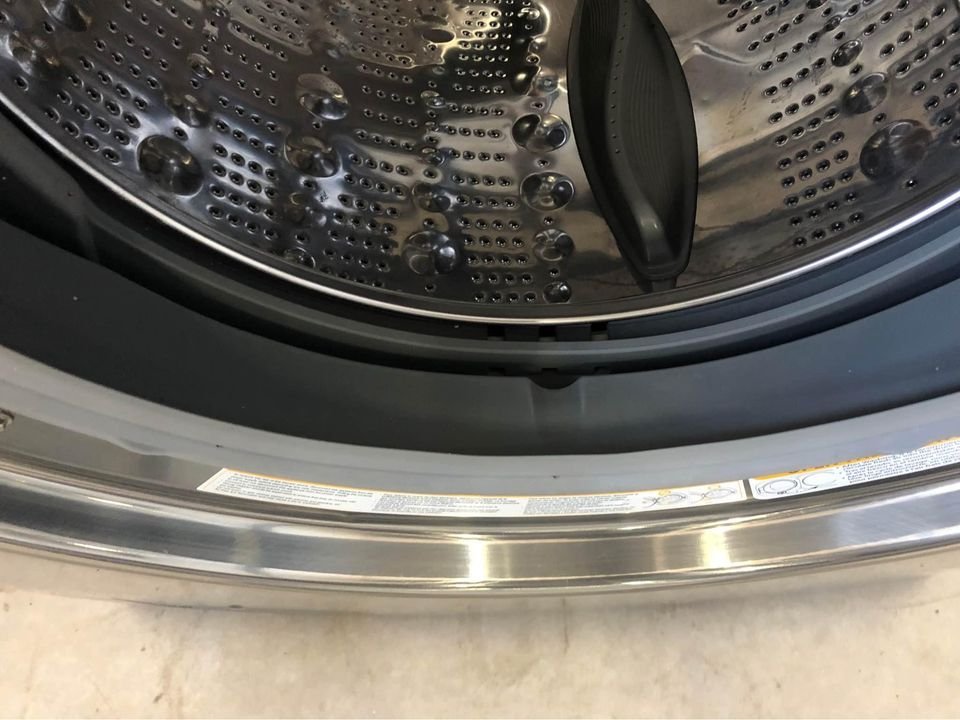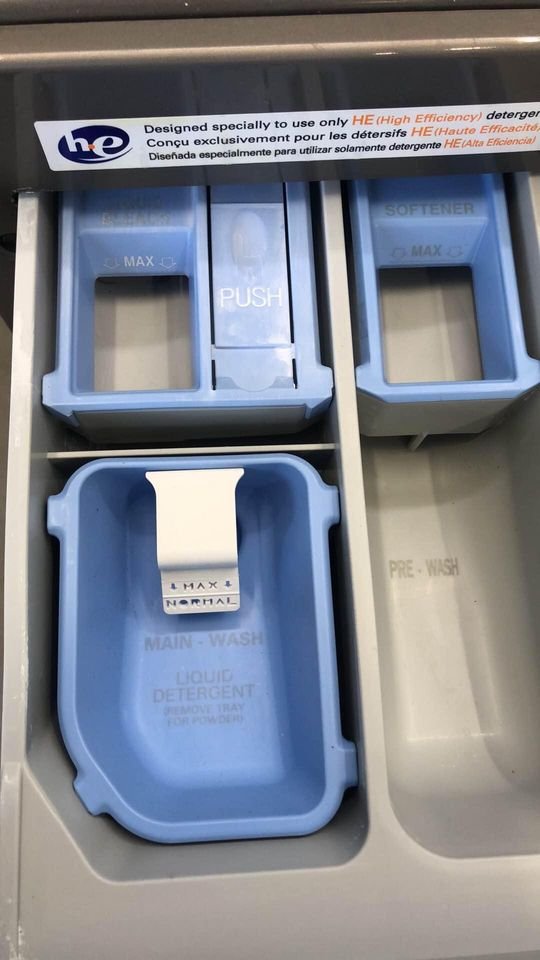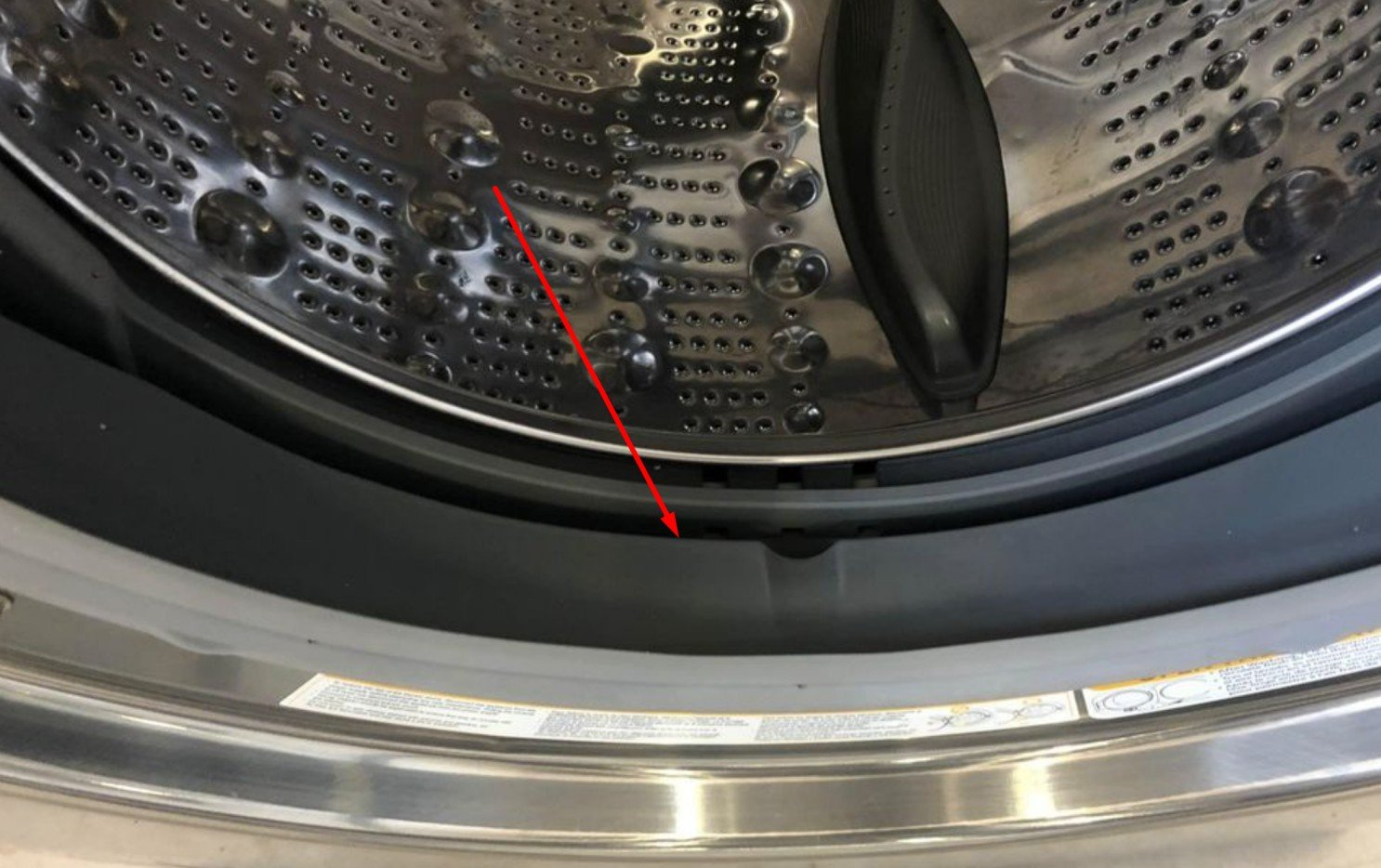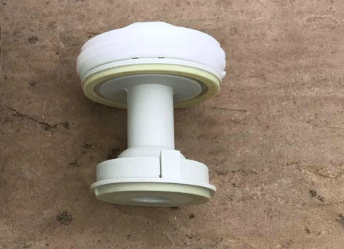It’s easy to fall in love with front-loading and high-efficiency (HE) washers because they require less water and detergent. However, these models require special procedures to clean and vent the components.
Effective Steps To Cleaning Your Front-Load Washing Machine

If you notice that your front-loading washer smells like a sports locker room, it’s time to clean it and start using special maintenance procedures thoroughly.
Clean The Mold
If you see black spots or notice that the washing machine is developing mold. This means the gasket is not drying enough between each washing cycle or the detergent leaves too much residue.
This moisture causes mold to grow, so spray the gasket with hot soapy water or mildew cleaner to remove it. Rinse off the cleaner with a clean rag or cloth.
You may need multiple clothes if the gasket is slimy with mold. Spray and wipe until the cloth comes out clean.
Thoroughly Clean The Board Once A Month
To remove any noticeable mildew, add 1 cup of bleach to your empty washer and run a hot cycle. You should also pour 1/2 cup of bleach into the detergent or fabric softener compartment to ensure the entire machine is cleaned.
After the cycle, run a few more cycles without adding bleach. This will remove the smell of bleach from the washing machine before you use it to wash your clothes again.
If you still see black mold stains after running the washer, you may need to put on gloves, a face/nose mask, and start scrubbing the stains with a bleach solution. Dip a toothbrush in a solution of no more than 10% bleach and scrub away any mold.
Sprinkle 1/3 cup (75 g) of baking soda inside the drum. The baking soda will help remove the bad smell of mold or dirty fabrics.
Close the door and load two cups (470 ml) of white vinegar into the detergent tray. The vinegar and baking soda will create a reaction that will clean the washer drum.
Always check the washing machine instruction manual for specific cleaning recommendations.
Remove All Foreign Objects
Once you have removed the gasket, check if there is any object between the rubbers. Pointed items may damage the gasket and the washing machine if you keep using them in that state. Always check the pockets of your clothes and remove the objects before washing them.
Common foreign objects include:
Check For Dust Or Hair
If you see hair in the washing seam, particles from your clothes are building up in the washer. If you have pets or people with long hair in your home, you should check the gasket for hair at least once or twice a week.
If the gasket looks dusty, you may need to keep the washer’s door closed occasionally. For example, if your dog will be locked in the laundry room overnight, keep the door closed to prevent any hair or other unwanted items from slipping into your washer.
Dust accumulates on the gasket when dust or lint from the dryer or laundry floats around and lands on the gasket. To reduce dust particles in the air, change the lint filter frequently.
Turn On The Washing Machine
Program the washer to run a clean cycle (if your washer was factory configured to have that option). If not, then set it to do a normal wash. Choose a high-heat wash so the baking soda and vinegar have a chance to react. Let the washing machine go through a complete wash and rinse cycle.
If your high-efficiency washer has a clean cycle, the product manual that comes with it will have specific instructions on when to add the vinegar and baking soda.
Ensure you don’t put a combo of baking soda, vinegar, and bleach in your washing machine. This can create a dangerous reaction that can damage the washer.
Remove And Clean The Detergent Dispenser Panel

Take out the detergent dispenser panel and soak it in warm water. Remove the panel and spray it with an all-purpose cleaner. After perfectly doing the clean-up, put it back in place.
If your washing machine has a fabric softener dispenser, you should also clean its panel.
Cleaning The Outside Of The Washing Machine
Spray a clean rag or cloth with an all-purpose cleaner and wipe down all exterior surfaces of the washer. You’ll be cleaning out any lint, dust, and hair that may have accumulated on the outside.
Keeping the outside of the washing machine clean can prevent dust and dirt from entering the machine.
Cleaning Your Front-Load Washing Machine Rubber Gasket

Even with the right detergent and anti-moisture efforts, there is no guarantee that your washing machine drum will not develop some anti-mold buildup.
The rubber gasket surrounding the doors is especially problematic, so regularly remove any debris you see stuck in the gasket and clean it with a cleaning solution made up of one part white vinegar and one part water.
You should also learn how to keep your washing machine dry and clean between each wash cycle.
More ways to Clean The gasket
The gasket is the rubber ring that surrounds the opening of the washing machine drum. This creates a seal to prevent water from leaking out of the machine.
Open the washing machine door as far as possible and remove the rubber surrounding the opening.
The gasket will remain attached to the washer, but you can peel it off to clean it and ensure nothing is stuck.
Maintaining A Front-Loading Washing Machine
Use The Correct Detergent
Always ensure you purchase a detergent specifically designed for use in a high-efficiency washer. Also, you should only use the recommended quantity of high-efficiency detergent (and fabric softener). If you use more detergent than necessary, the product will build up on your clothes and the washing machine.
You should also remember that detergent buildup can create a bad odor and cause mold to grow.
Always Remove washed clothes immediately after they’re done. Don’t let clean, damp clothes sit in the washer for hours before moving them into the dryer. Mold and odors develop faster in high-efficiency washers than in top-load models.
Dry The Seam Between Loads Of Laundry
Ideally, you should take an old cloth and thoroughly wipe it around the seam after every load of laundry you wash. The goal is to remove all joint moisture so mold cannot develop.
You should also keep the door open slightly after any wash cycle, enabling moisture to evaporate from the machine easily.
You should also dry the inside of the door, especially if you tend to keep it closed most of the time.
Remove And Air Dry The Dispensing Tray
While frequently cleaning the detergent dispenser panel or tray, make it a habit to at least remove it after every wash cycle. You need to take it out and let it air dry. This will also allow air to move within the washer itself, which can prevent any mold growth.
If you habitually remove the dispenser tray after every wash, you can quickly check for stains or black mold that need to be cleaned.
How To Effectively Clean The Drum Of A Washing Machine
Pour 100 ml of chlorine bleach into the machine’s drum and start washing at a temperature of at least 140 degrees Fahrenheit (60 ° C), without clothes.
Citric acid can be used to remove the scale. To do this, Pour 100 grams of citric acid into the drum and run the wash at maximum temperature. Ideally, the mode will be a double rinse.
Another method is to Mix a small amount of water and baking soda in a 1:1 ratio and pour the solution into the detergent compartment. Pour a little vinegar into the drum – no more than 400 ml.
Set the maximum temperature and let the machine do most of the work for you. Then remove the remains with a sponge and dry the drum. The scale, mildew, and odor will disappear without a trace.
How To Clean The Scale Heater
Citric acid will also help remove the scale on the electric heater. The quantity of powder depends on the degree of contamination, but on average, a machine with a load of 11pounds requires 250 g.
Pour 200 g into the dust compartment and 50 into the drum, and run the wash at maximum temperature.
The most aggressive acetic acid can also cope with slag. Simply add 50 ml of vinegar to the container of the air conditioner and turn on the machine. You must also apply this technique with caution, as vinegar can damage rubber elements.
How To Clean The Filter Of A Washing Machine With A Drain Pump

The filter is normally located at the bottom of the front of the washer, behind the plastic cover.
Put a dry towel on the floor, place the container under the lid, then remove the filter; the residual water can now flow out of the machine. The next step is to open the lid securely and pull out the plug.
Manually remove any debris that has accumulated inside. If necessary, treat the surface with detergent and dry it.
How To Clean The Drain Hose Of A Washing Machine
The drain hose is also cleaned when the drum is cleaned with soda and vinegar. But in case of a serious blockage, additional measures must be taken.
Disconnect the washer from electricity and turn off the water supply. Disconnect the hose from the machine (water may leak during the process).
Now you can start cleaning. To do this, use a Kevlar rope with a non-metal brush on end. First, clean the hose on one side, then on the other, and finally rinse with a jet flow of hot water.
